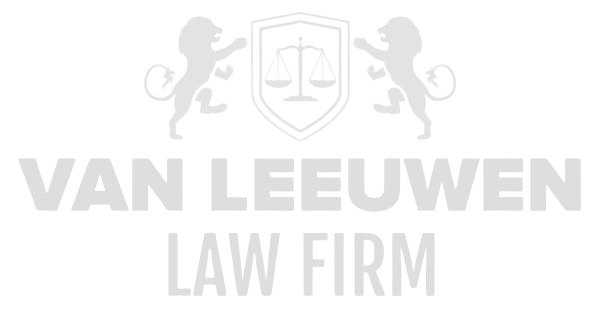Combatting serious fraud, bribery, and corruption within organizations requires more than just the implementation of technical and operational controls. It demands a thoughtful approach to the people who make up the organization. The so-called “People Strategy” plays a crucial role in fostering a culture of integrity, promoting responsible behavior, and effectively managing the risks associated with fraud and corruption. Employees, leadership, and their behavior within the organization are often the key to preventing and detecting serious forms of fraud.
A People Strategy aimed at combating fraud should not be limited to appointing compliance officers or installing whistleblower reporting systems. It must encompass a broader approach, focused on promoting ethical conduct, strengthening internal control systems, and investing in the right culture and training. Developing a culture that actively rejects fraud, bribery, and corruption—while making employees feel supported in reporting wrongdoing—is essential for an organization seeking protection against these serious offenses.
This article explores the challenges organizations face when implementing a People Strategy that contributes effectively to the fight against fraud, bribery, and corruption. We examine the role of leadership, culture, training, behavioral influence, employee accountability and motivation, as well as the need to provide appropriate resources and systems to monitor and respond to misconduct.
The Role of Leadership in the People Strategy
Leadership is one of the most influential components of a People Strategy. The attitude and values of senior management shape the organizational culture and influence employee behavior. Leaders must not only promote ethical conduct but also lead by example, adhering to the highest standards of integrity and transparency. They must ensure that fraud, bribery, and corruption are not just condemned on paper but actively addressed in day-to-day operations.
The challenge for leadership lies in consistently conveying the message that fraud and corruption will not be tolerated, while simultaneously creating an environment in which employees feel safe to report unethical behavior. This requires leaders to take responsibility for their role in fostering a culture that combats fraud and corruption. Leaders should be actively involved in the development and enforcement of ethical policies and in the implementation of measures aimed at detecting and preventing fraud.
Moreover, leaders must invest in appropriate training and professional development to ensure employees understand the consequences of fraud and corruption and are equipped to promote ethical conduct. A leadership strategy focused on combating fraud therefore requires not only policies and controls but also deep engagement in cultivating a moral and ethical working environment that discourages misconduct.
Creating a Culture of Integrity
Organizational culture plays a decisive role within the People Strategy and in the success of efforts to combat serious fraud and corruption. Culture determines how employees behave, both individually and collectively. A culture of integrity and transparency is essential to prevent fraud and corruption because it encourages ethical behavior and supports the reporting of misconduct.
The challenge lies in creating a culture in which integrity is the norm and employees are rewarded not only for performance but also for adhering to ethical standards. This means that organizations must do more than simply implement rules and procedures—they must also communicate and enforce them consistently. Developing such a culture requires leaders to continuously emphasize the importance of ethical behavior and highlight the responsibility of all employees to prevent fraud.
It is equally important that the culture aligns with the organization’s core values and that employees feel their well-being and ethical choices are supported. This can be achieved by encouraging open communication, providing safe reporting channels, and taking strict measures against employees involved in fraud or corruption.
Training and Awareness: The Catalyst for Behavioral Change
One of the greatest challenges in combatting fraud, bribery, and corruption is changing employee behavior. It is essential that employees understand what fraud and corruption entail, the legal and ethical implications, and how they can contribute to prevention. Providing targeted training and awareness campaigns is therefore a key component of the People Strategy.
Training should not only focus on explaining legislation and compliance policies, but also on reinforcing the organization’s ethical values. Employees need to learn how to recognize potential red flags, how to take responsibility for maintaining organizational integrity, and how to respond in situations where they are pressured to act unethically.
Additionally, training must be practical, using real-life scenarios and case studies to help employees make ethical decisions in realistic situations. It is important that these training sessions are repeated regularly so that awareness of the risks of fraud and corruption remains high and employees feel supported when reporting misconduct.
Behavioral Influence and Accountability: Ensuring Engagement
Behavioral influence plays a significant role in the success of a People Strategy. Promoting a responsible and ethical work culture requires that employees feel accountable for their actions and for the impact those actions have on the organization and its stakeholders. Organizations must implement mechanisms that hold employees accountable, with clear expectations of responsibility at all levels.
To achieve behavioral change, employees must be motivated to improve their behavior. This can be achieved through both positive and negative incentives. Employees who act ethically should be recognized and rewarded, while those involved in fraud or corruption must face serious consequences. This creates a climate in which employees understand the value of ethical behavior and take the potential consequences of unethical conduct seriously.
Accountability must go beyond individual performance. The organization should establish a system of shared accountability where teams and departments are jointly responsible for maintaining ethical standards and preventing fraud. This can include implementing team-based goals and performance indicators aimed at promoting integrity across the organization.
Technology and Innovation in the People Strategy
Integrating technology into the People Strategy can be a powerful tool to enhance the effectiveness of fraud prevention and detection. Technology can be used to automate processes, monitor compliance with ethical guidelines, and even analyze employee behavior to identify potential risks.
For example, behavioral analytics tools can help detect anomalies that may indicate fraud or corruption, while reporting and monitoring platforms make it easier for employees to report misconduct. Technology also enables the collection of employee data that can help identify risks, such as transactions that deviate from normal patterns or behavioral signals that suggest corrupt practices.
Using technology in the People Strategy thus not only enhances efforts to fight fraud and corruption but also contributes to an improved workplace culture by increasing transparency and accountability.
The Essence of a Strong People Strategy in the Fight Against Fraud
A People Strategy focused on combating serious fraud, bribery, and corruption is essential to an organization’s success. Leadership, culture, training, and behavioral accountability form the foundation of such a strategy, and the use of technology can further enhance these efforts. However, it is crucial that organizations go beyond implementing rules and procedures—they must actively create an ethical working culture that rejects fraud and corruption.
The challenge lies in consistently and proactively promoting a culture of integrity and ethical conduct, in which employees feel supported in preventing and reporting fraud. This requires ongoing leadership commitment, effective training programs, technological tools, and an environment where individuals feel responsible for their actions. Only by effectively integrating these elements into the People Strategy can organizations defend themselves against the serious threats posed by fraud, bribery, and corruption.















